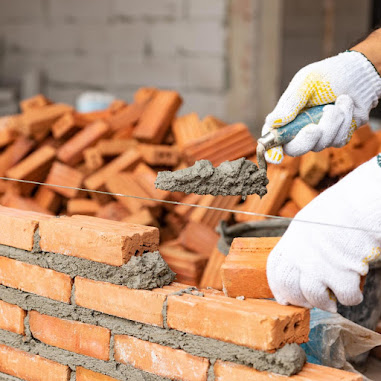Brick pointing: What are the Right Techniques for Long Lasting Restoration
Water intrusion or early degradation of the veneer, which can lead to collapse, necessitates brick repointing. Repointing your brickwork will only endure as long as the proper material is applied by competent hands that are familiar with trade methods and during good weather.The goal of brick pointing is to repair any loose mortar that has begun to slip off a home's wall. The task should be conducted from the top down using a ladder or scaffold tower.. Before a fresh mix is applied, only a little amount of mortar must be removed. And in this context if you are looking for BrickPointing in Brooklyn, then you can always consider hiring the services of a professional like NY Construction Co.
Brick pointing may appear to be a laborious and superfluous operation, yet it is essential. The wet air that penetrates into the masonry might harm a building with loose mortar between the bricks. The weather batters the exterior structure of a home over time, causing mortar to loosen. Although brick pointing might take a long time, it only requires a few tools.
If the wall requires substantial work, a ladder alone may not be sufficient, and a scaffold tower, if available, would be suitable. Because the task necessitates working from a height with power tools, it's preferable to have a stable foundation to stand on and two free hands. If you must use a ladder, locate someone to hold it or ensure that the ladder's base is buried into the ground or supported by a heavy item. Starting at the top of the wall and working left to right or vice versa is the best way to go about brick pointing. Starting from the top allows you to catch the falling mortar.
There is always the risk of mould, moss, or mildew growing on bricks that receive little sunshine and/or are near moist plants. If you observe this, you may solve the problem using things you already have in your laundry room. Mix one cup bleach with one gallon of water, then clean the area with your own solution using a bristle brush. If you use a wire brush, steel will rub off on the brick, rusting or discolouring it. Soak your bricks in water before cleaning to help prevent them from absorbing the bleach.
Water alone may cause bricks to deteriorate in two ways. The first is if the brick is placed in a location where water rises often and soaks the bricks. If the mortar and bricks get too wet, they will begin to break. In addition, a tidal line will be displayed. This line shows the accumulation of salts left behind by increasing water. Salts eat away at brick and mortar over time, causing it to degrade. If you observe a salt line on your brick, use a stiff but soft-bristled brush and a tri-sodium phosphate diluted with more parts warm water to remove it. To preserve your bricks from future efflorescence, apply a hydrophobic sealant or a white salty solution.
Your brick masonry work should last a lifetime and then some if you maintain close eyes on it, clean it regularly and thoroughly, and do any essential maintenance on time. With one exception, masonry is only as good as the foundation it was built on. Contact the experts at NY Construction Co. for high-quality brickwork that will last the test of time.



Comments
Post a Comment